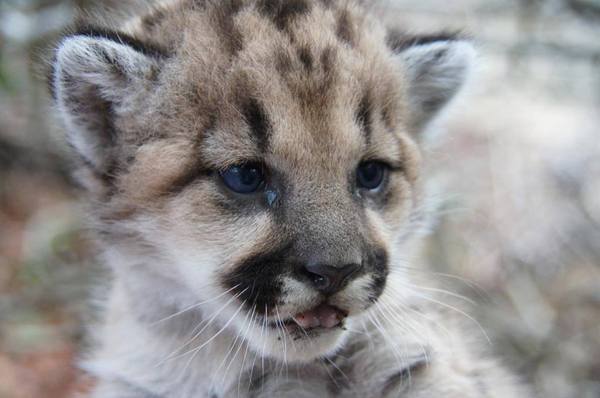New Baby Mountain Lions in the Santa Monica Mountains Will Face Challenges

Break out the cigars for the Santa Monica Mountains: they are now home to three brand new bouncing baby mountain lions. The babies, dubbed P-32, P-33, and P-34, were born a few weeks ago to proud mama P-19.
The birth announcement, which was understandably vague on close details to forestall too-curious admirers from visiting the maternity ward, came in the form of a couple of photos on the Santa Monica Mountains National Recreation Area's Facebook Page. The cubs, two girls and a boy, were born in the general area of Malibu Springs, on National Park Service land.
NPS ranger Kate Kuykendall told the young-uns' admirers on Facebook that biologists waited for P-19 to head off to hunt before they checked on the kittens, who are all doing well. This is P-19's second litter, and NPS biologists know this well because they've been observing the second-time mother since she herself was a cub.
The identity of the other adult puma involved in the babies' creation will have to wait on the results of paternity tests, though as we reported recently the list of probable fathers in the Santa Monicas is a lot shorter that everyone would prefer.

In response to a question on Facebook, Kuykendall says the biologists' brief handling of the babies doesn't seem to upset either them or their mother. "Sometimes the mom will move the kittens a little further from the original spot, however. Kittens are especially significant for our researchers to study because they can track them from just a few weeks old," said Kuykendall.
These babies won't have it easy: their habitat is hemmed in on all sides by either cities or ocean. And whoever their dad turns out to be, it's very likely that he's far too closely related to mama P-19 than is strictly advisable from a genetic diversity standpoint.
But facing the traffic, and unfriendly humans, and the other rigors of life in the Southern California urban-wildland interface comes later. For now, happy birthday to California's Next Top Predators!




